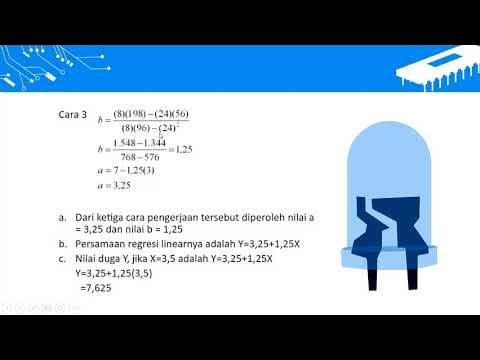Statistical Learning: 7.4 Generalized Additive Models and Local Regression
Summary
TLDRThis video discusses advanced statistical methods for fitting non-linear functions, focusing on local regression and generalized additive models (GAMs). It highlights the use of weighted least squares in local regression for better boundary extrapolation and introduces GAMs as a means to model multiple variables while retaining interpretability. The practical implementation in R is emphasized, along with the visualization of contributions from each variable. Additionally, it touches on the flexibility of GAMs in classification tasks and mentions upcoming discussions on tree-based methods for capturing interactions between variables.
Takeaways
- 😀 Local regression fits linear functions to localized subsets of data, enhancing flexibility in modeling non-linear relationships.
- 😀 The weighted least squares method is used in local regression, where weights decrease with distance from the target point.
- 😀 Loess and cubic smoothing splines are two popular methods for smoothing data and fitting non-linear functions.
- 😀 Generalized additive models (GAMs) retain the additivity of linear models while allowing for non-linear relationships among multiple variables.
- 😀 GAMs can be easily fitted in R using functions like `gam()` and allow for the incorporation of both linear and non-linear terms.
- 😀 The additive nature of GAMs aids in interpreting the contributions of individual predictors to the overall model.
- 😀 Visualizing the fitted functions in GAMs is crucial for understanding how each predictor influences the response variable.
- 😀 GAMs can also accommodate factor variables, allowing for piecewise constant functions in the modeling process.
- 😀 The `plot.gam()` function is essential for producing appropriate visualizations of GAM outputs, focusing on smooth functions rather than residuals.
- 😀 Tree-based methods are another effective approach for modeling non-linear relationships, emphasizing interactions between multiple variables.
Q & A
What is local regression, and why is it used?
-Local regression is a method that fits linear functions to localized subsets of data, allowing for flexible modeling of non-linear relationships. It is particularly useful for improving extrapolation at boundaries.
How does local regression determine the weights of data points?
-Weights are determined by a kernel function, where points closest to the target point receive higher weights, and weights decrease for points further away.
What are loess and cubic splines, and how do they compare?
-Loess and cubic splines are both effective smoothing methods for non-linear functions. When their degrees of freedom are set similarly, they produce comparable results.
What is the purpose of generalized additive models (GAMs)?
-GAMs are used to fit non-linear functions across multiple variables while retaining the additivity of linear models, making them more interpretable.
What is the significance of the additive nature of GAMs?
-The additive nature allows for easy interpretation of individual variable contributions to the overall model, enabling clearer insights into the effects of each predictor.
How are natural splines utilized in fitting GAMs?
-Natural splines are used to model non-linear relationships in GAMs, allowing for flexible fitting while controlling the degrees of freedom.
What function is used in R to plot GAMs, and why is it important?
-The function plot.gam is used to visualize GAMs, as it effectively displays the individual contributions of each term rather than focusing on residuals like the generic plot function does.
Can GAMs incorporate both linear and non-linear terms?
-Yes, GAMs can include a mix of linear and non-linear terms, allowing for more complex relationships in the modeling process.
What is the role of the ANOVA function in GAMs?
-The ANOVA function is used to compare different GAMs and test whether specific terms should be modeled as linear or non-linear.
How can GAMs be applied to classification problems?
-GAMs can model the logit of the probability for classification tasks, allowing the fitting of logistic regression models in an additive framework.
Outlines

Dieser Bereich ist nur für Premium-Benutzer verfügbar. Bitte führen Sie ein Upgrade durch, um auf diesen Abschnitt zuzugreifen.
Upgrade durchführenMindmap

Dieser Bereich ist nur für Premium-Benutzer verfügbar. Bitte führen Sie ein Upgrade durch, um auf diesen Abschnitt zuzugreifen.
Upgrade durchführenKeywords

Dieser Bereich ist nur für Premium-Benutzer verfügbar. Bitte führen Sie ein Upgrade durch, um auf diesen Abschnitt zuzugreifen.
Upgrade durchführenHighlights

Dieser Bereich ist nur für Premium-Benutzer verfügbar. Bitte führen Sie ein Upgrade durch, um auf diesen Abschnitt zuzugreifen.
Upgrade durchführenTranscripts

Dieser Bereich ist nur für Premium-Benutzer verfügbar. Bitte führen Sie ein Upgrade durch, um auf diesen Abschnitt zuzugreifen.
Upgrade durchführenWeitere ähnliche Videos ansehen
5.0 / 5 (0 votes)






